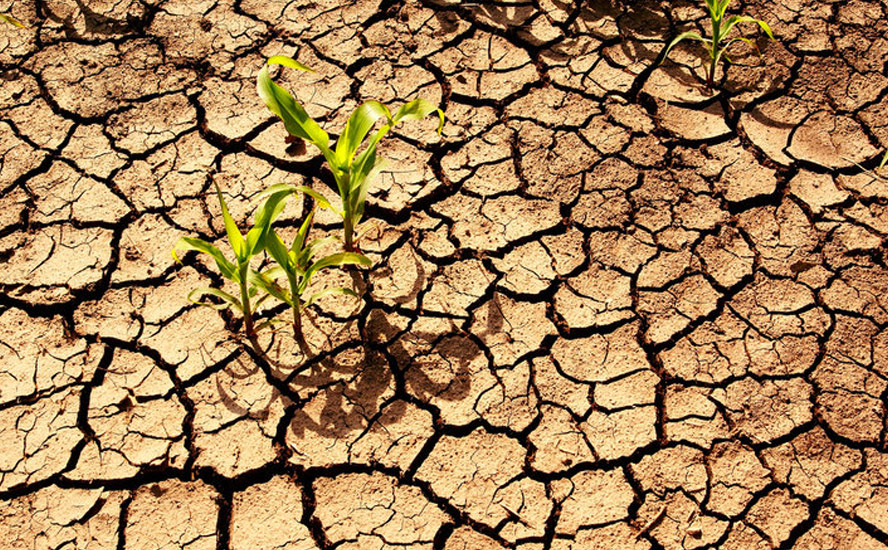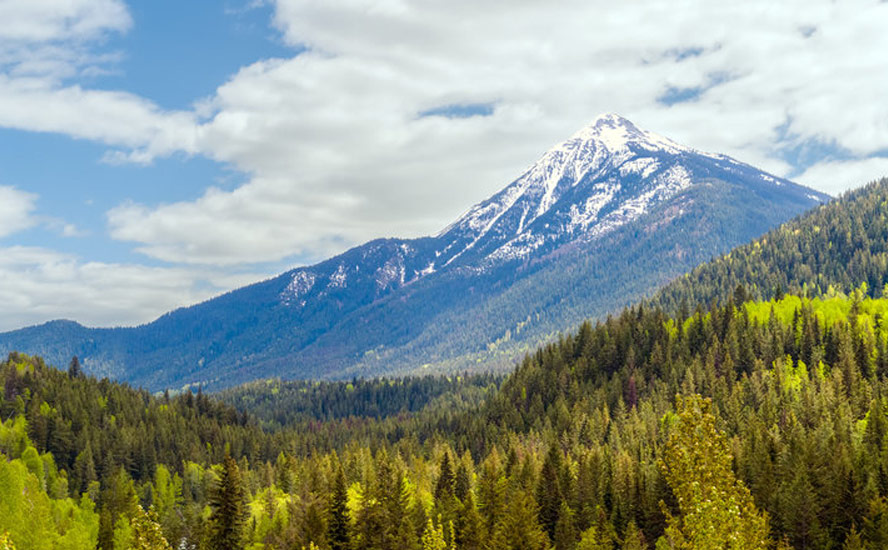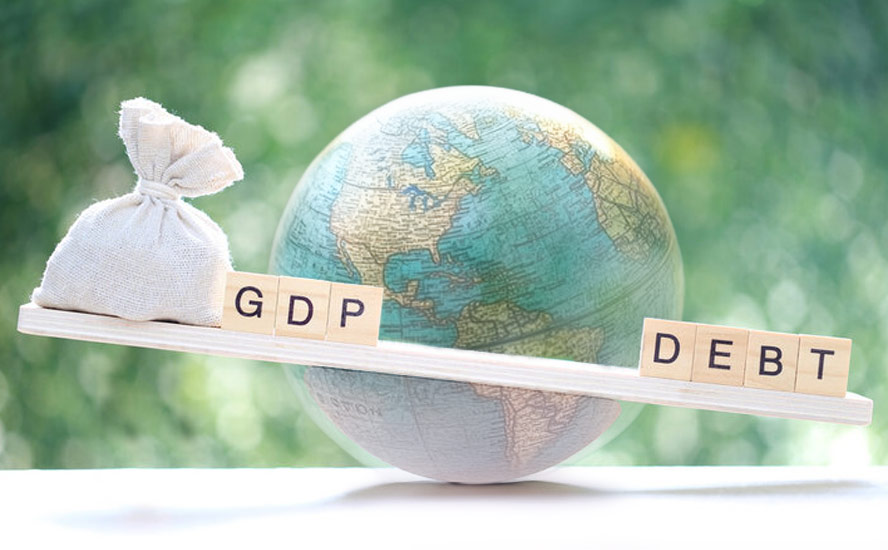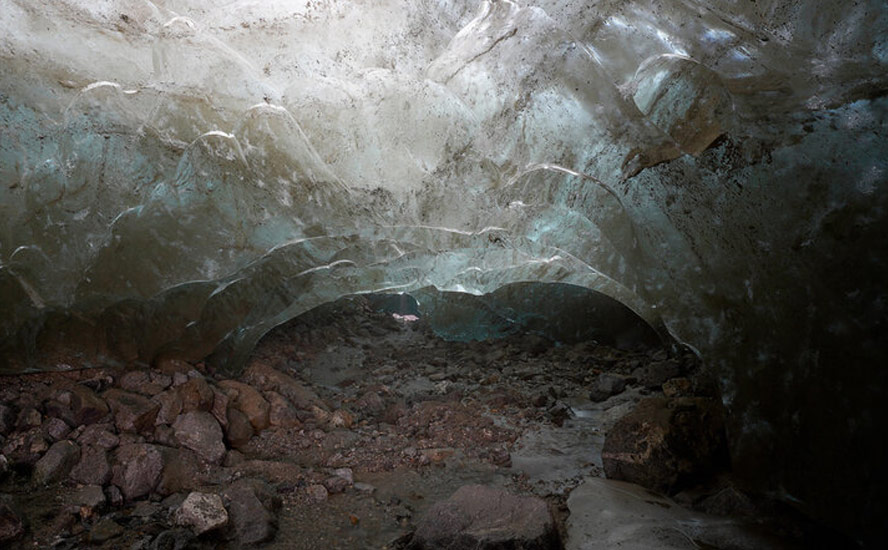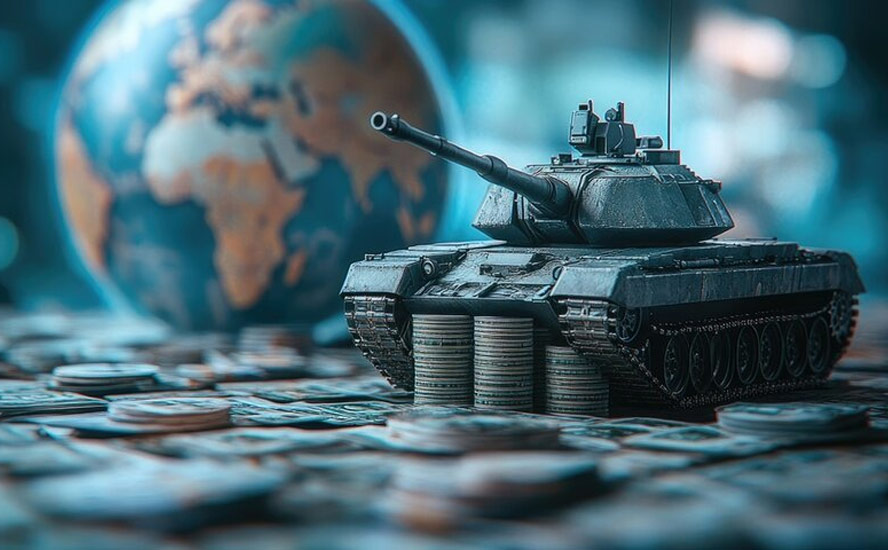US Red Shirts and the Boogaloo

2020.06.02
The race riots seen around the United States over the past few days are troubling for sure, but they are nothing new.
If there is one thing uniting the 50 American states of the union, historically, it is divisions over race, primarily Caucasian versus African American. It is disturbing to note that 157 years after the Emancipation Proclamation of 1863, and many decades after the race riots of the 1960s ushered in an era of equal opportunity and affirmative action, the United States is still struggling with questions of justice and inequality pertaining to its large black population.
Yet there is a marked difference between what is happening now compared to 100 years ago. During the period leading up to the 1920s, it was usually white people who instigated and participated in race riots. The purpose of these violent demonstrations was to assert white dominion rather than to express black anger and frustration.
Versus the burning and looting that have occurred in poor, primarily black urban areas since the 1960s. Examples include Watts in 1965, where anger over living conditions in a Los Angeles neighborhood led to 34 deaths in six days; or South Central LA in 1992, where violence erupted following the acquittals of white policemen, found not guilty of beating Rodney King to death, despite videotaped evidence showing them clubbing and kicking Mr. King on the side of a freeway. The riot that followed left at least 45 dead and caused a billion dollars worth of damage.
In 2013, following the acquittal of George Zimmerman in the shooting death of black teen Trayvon Martin, Black Lives Matter became nationally recognized after street demonstrations in Ferguson, Missouri and New York City, following the prominent 2014 deaths of two African Americans – Michael Brown and Eric Garner.
The latest incarnation of police violence against blacks, the murder of George Floyd by a Minneapolis police officer, sparked nation-wide riots targeting the mistreatment of African Americans by law enforcement officials, and wider issues of racism and injustice.
Over the weekend, the worst civil unrest in decades saw protesters torching vehicles, smashing windows, fighting with police, looting and defacing buildings. As of this writing, the National Guard had deployed about 5,000 personnel in 15 states and Washington, DC, to aid law enforcement in protecting lives and property. Curfews initiated over the weekend were being extended in several cities.
Red Shirts
A white person living in America and transported 100 years back in time to the 1920s, would likely find what happened over the past few days puzzling. With African Americans afforded the same civil liberties as Caucasians, including the right to assemble, practise their religion and vote, why such a violent outburst directed at whites?
The educational web page Tolerance.org asserts that, for many decades, race riots occurred during elections, with white mobs seeking to intimidate newly enfranchised black voters and to wrest power from politicians who would give blacks equal opportunities. Dozens of African Americans were killed in such riots in Memphis, TN, New Orleans, LA, Charleston, SC, and Eufaula, ALA.
During the Reconstruction period following the American Civil War (1865-77), attempts were made to redress the inequities of slavery and to solve the problems arising from re-admitting to the Union the 11 states that had seceded prior to the Civil War.
During the 19th century, the Republican Party stood against the extension of slavery to the new territories; it wanted slavery completely abolished. In fact the Grand Old Party (GOP) traces its roots to the 1850s, when as Encyclopedia Britannica reminds us, antislavery leaders (including former members of the Democratic, Whig, and Free-Soil parties) joined forces to oppose the extension of slavery into the Kansas and Nebraska territories by the proposed Kansas-Nebraska Act. At meetings in Ripon, Wisconsin (May 1854), and Jackson, Michigan (July 1854), they recommended forming a new party, which was duly established at the political convention in Jackson.
In the South, a politically mobilized black community joined with white allies to bring the Republican Party to power, and with it a redefinition of the responsibilities of government.
It was this newly empowered black community that the Democratic Party most feared as the 19th century drew to a close. The Red Shirts of the southern United States were white supremacist paramilitary terrorist groups, affiliated with white Democrats in North Carolina, who felt politically devalued during the post-Civil War Reconstruction.
Wikipedia recalls Red Shirt groups originated in Mississippi in 1875, when Democratic Party private terror units donned red shirts to make themselves more visible and threatening to Southern Republicans, both whites and freemen. The aim of the Red Shirts was to help the Democratic Party regain power in the South during the 1870s. They played a prominent role in intimidating non-Democratic Party voters during the 1876, 1898 and 1900 elections.
Tolerance.org writes: Prior to the 1898 election in Wilmington, N.C., Whites took to wearing red shirts to symbolize their willingness to resort to the Winchester rifle and “a baptism of blood” to regain power. They would teach the “Southern Negroes that they cannot rule over the property and the destinies of the superior race,” the Washington Post editorialized, commending the Red Shirts.
How wild is it to read such a racist stance from the now left-leaning Washington Post, which supported the equally racist Democratic Party, whose membership is now heavily made up of African Americans? What a difference a century makes. Remember it was the Republican Party that was the party of reformers, which today is the party of conservatives, anti-abortionists, fundamentalist Christians and under the Trump administration, ties to alt-right groups, the same groups that Trump refused to condemn unequivocally for the 2017 “Unite the Right” rally organized by extreme-right activists in Charlottesville, North Carolina.
Tolerance.org writes that, in 1919 alone, there were 26 race riots and “countless lesser acts of racial violence” including:
- In Texas, one man was killed and an African American school principal was publicly flogged after a local newspaper article condemned lynching.
- In Chicago, a race riot erupted after an African American youth was stoned while swimming at an all-white beach, resulting in his death by drowning. Thirty-eight people were killed during two weeks of sustained violence, and 1,000 black families were left homeless.
- In Knoxville, Tenn., six people were killed and 20 injured after unsuccessful attempts to lynch a black prisoner charged with killing a white woman. Afterward, U.S. troops shot up a black neighborhood on the basis of false rumors that Blacks had killed two white men.
- In Arkansas, a riot by white racists left up to 200 Blacks dead. The violence resulted in 79 murder indictments—all against Blacks. Twelve were convicted and sentenced to die before their convictions were overturned on appeal.
A tinderbox waiting to burn
Fast-forwarding to the present, we see the riots that started over the death of a black suspect being arrested by a white police officer, have evolved into something much bigger. The Australian Broadcasting Corporation reports that protesters seem to be coalescing around one common theme: injustice.
The news outlets points to a number of facts that have riled up demonstrators, including that in Minneapolis, where the murder occurred, only 20% of the population is black, but 60% of the victims of police shootings between 2009 and 2019 were black. Nationally, of 1,099 people police killed last year, almost a quarter were black, despite only comprising 13% of the population. Almost one out of every two police or correction officers fired for misconduct, ends up being reinstated.
The protests are racial but they are also economic. In the United States, the wealth gap between white and black Americans hasn’t changed in 60 years, and as ABC News notes,
American taxpayers bailed out the very Wall Street bankers and traders who brought financial ruin upon them in 2008, only to see some of them hold parties and reap multi-million-dollar bonuses.
Some of the demonstrators say they learned how to loot from corporate America.
Just last month America watched the first massive coronavirus stimulus payment, meant for small business, get gobbled up by large companies who were given preferential access to the taxpayer funds because of their corporate bank accounts.
Black Americans and Latinos are much more likely to have jobs that put them at risk of contracting COVID-19, and they’re more likely to be forced to return to those jobs because of financial hardship.
This is a nation that had such little faith in the system that many Americans voted for Trump to tear it down (“Drain the Swamp”).
The seething anger was there already. After two months of lockdown, it was ripe to burst out.
For many, it just needed a cause.
There also appears to be some rogue elements hijacking the movement, including Antifa and other militant left groups.
The death of George Floyd also appears to have riled up right-wing militia and “Patriot” forums, which are threatening violence and talking up the prospect of a civil race war known as Boogaloo.
The Australian agrees that “America was ready to explode” even before George Floyd was killed:
The twin tragedies of 40 million people — one-quarter of the US workforce — losing their jobs and 100,000 people losing their lives during the coronavirus pandemic had turned the US into an emotional tinderbox that was waiting for a spark to set it off.
No spark could have been more potent than the sickening video of police officer Derek Chauvin killing unarmed 46-year-old Floyd by leaning on his neck with his knee last week…
The protests now engulfing the US are about more than the killing of Floyd and systemic police brutality by US police toward black Americans. They are also an explosion of pent-up anger for everything Americans have suffered during this coronavirus pandemic, from the collapse of their economy, the shattering of jobs and livelihoods, the fear of infection and death, and the maddening restrictions on normal life.
“People are seething about all kinds of things,” Barbara Ransby, a historian at the University of Illinois, told The Washington Post. “There are major turning points and ruptures in history … this is one of those moments, but we’ve not seen how it will fully play out.”
For many African Americans, the sight of former policeman Chauvin slowly killing Floyd with his knee was the last straw after enduring the toughest few months for black Americans since the struggles of the civil rights era.
The coronavirus pandemic has magnified the country’s economic and racial divide, with black Americans getting hit disproportionately by both the virus itself and the economic fallout.
Studies suggest that the rate of black fatalities from the coronavirus is 2½ times higher than for whites, a figure that also reflects inequalities in health and living standards.
“Social conditions, structural racism and other factors elevate risk for COVID-19 diagnoses and deaths in black communities,” scientists from Johns Hopkins University wrote last week, after releasing a study showing the disproportionate impact of the pandemic on African Americans.
Likewise, blacks and Hispanics have been hit hardest by the country’s economic shutdown because they are often in the poorest-paid jobs, which were among the first to go during the shutdown.
Another important point is the protests have primarily been driven by people under 30, many of whom have found themselves out of a job, due to covid-19. According to the Bureau of Labor Statistics, in April unemployment for young people (16-24) was at its highest since 1948. The unemployment rate for black workers is typically twice as high as for whites.
Blaming the left
While law enforcement and federal officials say both far-right and far-left groups are responsible for egging on protesters, President Trump has focused his attention, unsurprisingly, on the far left. On Sunday Trump tweeted that the US would designate Antifa, short for antifascists, as a terrorist organization. Attorney General William Barr also singled out the group in a statement denouncing the violence as domestic terrorism.
However, federal law enforcement officials reportedly told CNN they are aware of other groups including anti-government groups associated with far-right extremists and white supremacy causes.
In Minnesota, about a fifth of the weekend arrests were from outside the state, including so-called ‘Boogaloo’ groups associated with far-right extremist ideology that wants to start a civil war, according to Florida Republican Marco Rubio, who is acting chair of the Senate Intelligence Committee. The groups, including Antifa, were not “ideologically compatible but share a hatred of govt & police & are taking advantage of the protests,” Rubio tweeted.
President Trump appeared to fan the flames, and suggested a violent confrontation was imminent, with his statement “When the looting starts, the shooting starts” – a controversial phrase pinched from a Miami police officer who said it during a civil rights protest.

Conclusion
The race riots that have convulsed the United States over the past week were wholly predictable; in an earlier article, we suggested that the coronavirus fallout could lead to social unrest, particularly food shortages due to problems with supply chains.
The riots aren’t over bread, like they were in the Arab Spring, but we weren’t wrong about food shortages. At the beginning of May, retailers across the United States started limiting meat purchases, due to slaughterhouse plant closures and workers falling ill to covid-19.
And while the reopening of states is good for local economies, it will be bad for many poor renters. Tenants are facing the end of freezes on rent payments and evictions put in place at the start of the pandemic. The freezes however didn’t cancel monthly payments, meaning that come June 1, many will owe three months’ rent. Evictions are soaring, during the last economic crisis in 2008/9 10,000,000 mortgages were foreclosed, I expect that number to soar as well.
With millions of people potentially facing homelessness if they can’t come up with the funds, and many will fall into category because the US economy is still in severe recession, the barricades could see a torrent of fresh protesters.
And while a $3 trillion stimulus package, including $100 billion in relief for renters, was passed by the Democrat-controlled House of Representatives, the bill stands little chance of being passed by the Senate, where Republicans hold the majority.
Meanwhile, expect the police and the National Guard to strengthen their forces at the protests, leading to more clashes, injuries and deaths. Trump has called governors “weak” and on Monday urged their National Guard military police units to “dominate the streets”.
Indeed Trump appears to be basking in his new role as the “law and order” president, on Monday afternoon, saying he may invoke the 1807 Insurrection Act, which permits a president to deploy military within the US to deal with civil disorder.
Generally the military cannot be used for domestic law enforcement, however, “As we speak, I am dispatching thousands and thousands of heavily armed soldiers, military personnel, and law enforcement officers to stop the rioting, looting, vandalism, assaults, and the wanton destruction of property,” Trump said in the White House Rose Garden. “We will end it now.”
Richard (Rick) Mills
subscribe to my free newsletter
aheadoftheherd.com
Ahead of the Herd Twitter
Legal Notice / Disclaimer
Ahead of the Herd newsletter, aheadoftheherd.com, hereafter known as AOTH.
Please read the entire Disclaimer carefully before you use this website or read the newsletter. If you do not agree to all the AOTH/Richard Mills Disclaimer, do not access/read this website/newsletter/article, or any of its pages. By reading/using this AOTH/Richard Mills website/newsletter/article, and whether or not you actually read this Disclaimer, you are deemed to have accepted it.
Any AOTH/Richard Mills document is not, and should not be, construed as an offer to sell or the solicitation of an offer to purchase or subscribe for any investment.
AOTH/Richard Mills has based this document on information obtained from sources he believes to be reliable but which has not been independently verified. AOTH/Richard Mills makes no guarantee, representation or warranty and accepts no responsibility or liability as to its accuracy or completeness. Expressions of opinion are those of AOTH/Richard Mills only and are subject to change without notice. AOTH/Richard Mills assumes no warranty, liability or guarantee for the current relevance, correctness or completeness of any information provided within this Report and will not be held liable for the consequence of reliance upon any opinion or statement contained herein or any omission. Furthermore, AOTH/Richard Mills assumes no liability for any direct or indirect loss or damage or, in particular, for lost profit, which you may incur as a result of the use and existence of the information provided within this AOTH/Richard Mills Report.
AOTH/Richard Mills is not a registered broker/financial advisor and does not hold any licenses. These are solely personal thoughts and opinions about finance and/or investments – no information posted on this site is to be considered investment advice or a recommendation to do anything involving finance or money aside from performing your own due diligence and consulting with your personal registered broker/financial advisor. You agree that by reading AOTH/Richard Mills articles, you are acting at your OWN RISK. In no event should AOTH/Richard Mills liable for any direct or indirect trading losses caused by any information contained in AOTH/Richard Mills articles. Information in AOTH/Richard Mills articles is not an offer to sell or a solicitation of an offer to buy any security. AOTH/Richard Mills is not suggesting the transacting of any financial instruments but does suggest consulting your own registered broker/financial advisor with regards to any such transactions
Legal Notice / Disclaimer
Ahead of the Herd newsletter, aheadoftheherd.com, hereafter known as AOTH.Please read the entire Disclaimer carefully before you use this website or read the newsletter. If you do not agree to all the AOTH/Richard Mills Disclaimer, do not access/read this website/newsletter/article, or any of its pages. By reading/using this AOTH/Richard Mills website/newsletter/article, and whether you actually read this Disclaimer, you are deemed to have accepted it.











